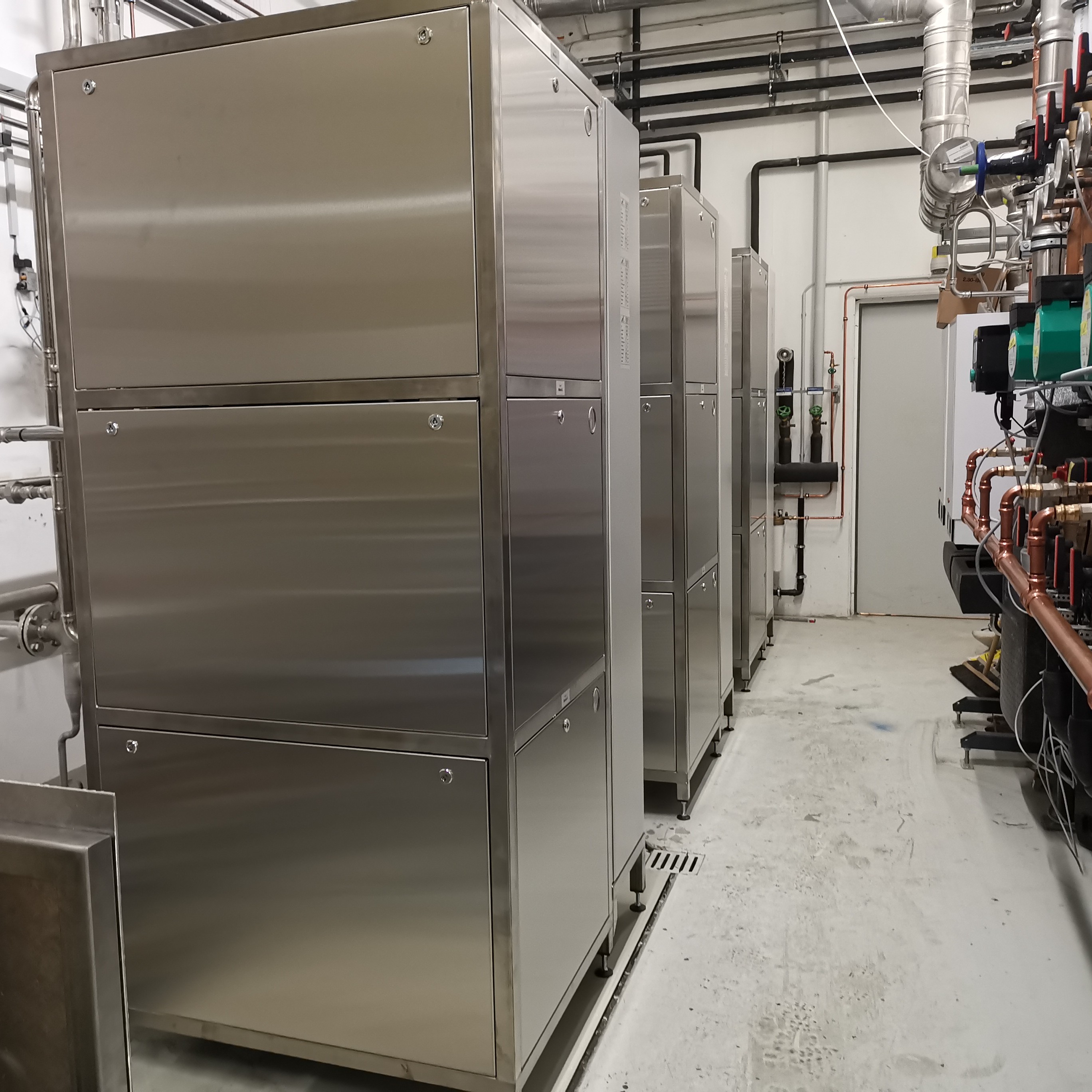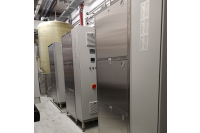Reduce grid fees ("Netzentgelt")
The use of our electric steam generators enables your company to make considerable savings on grid charges.

Want to find out more about this service?
Contact usElectric steam generators to optimize energy costs
At a time when energy costs are constantly rising, it is becoming increasingly important for energy-intensive companies to find ways to reduce their operating costs. One promising way to realise savings is through the grid fees ("Netzentgelt") that companies have to pay to the grid operators. In particular, companies whose annual electricity consumption is above a certain threshold can benefit significantly from these savings. In 2024, around 400 band load customers and around 4,200 atypical grid users under the jurisdiction of the Federal Network Agency achieved total grid fee reductions of over €1 billion in this way.
What are grid fees?
Grid charges are fees that companies pay for the use of the electricity grid. These fees cover the costs of operating, maintaining and expanding the electricity grid. The costs of these grid fees for electricity have risen by an average of 10% for industrial companies in recent years. The share of the total electricity price is therefore 15% on average - and rising.
In Germany, the grid fees are determined by the so-called grid development plans and the respective grid operators.
Grid fees are subject to strict regulation aimed at ensuring transparency and fairness in grid operation. The rules cover the following key aspects:
Regulation by the Federal Network Agency
The Federal Network Agency (BNetzA) is responsible for monitoring and approving grid fees. Grid operators must disclose their costs and fees. These are then reviewed by the BNetzA to ensure that the grid fees are not excessively high.
Distinction between different consumption classes
The grid fees vary considerably depending on the consumption class. They consist of the labor costs per kWh and the power costs for the maximum power called up within a year. Depending on the grid operator, the performance costs can account for up to 90 percent of the total costs.
Waiver of grid fees for energy-intensive companies
Under Section 19 StromNEV (Electricity Grid Charges Ordinance), end consumers with special or grid-stabilizing usage patterns can apply for reduced grid charges.
- Atypical grid usage (StromNEV Section 19 (2), sentence 1)
Atypical grid usage describes a special form of electricity usage in which certain electricity consumers in a grid distribute their power (power consumption) significantly differently than most other consumers by having the highest electricity demand at times when the grid is otherwise under less load.
This form of grid usage is particularly relevant for companies or businesses that have their consumption peaks at off-peak times and therefore place less demand on the grid infrastructure. Examples include energy-intensive companies that use most of their electricity at night. The advantage for such users is that they can apply for a reduction in grid charges, as their atypical grid usage places less strain on the grid and reduces peak loads. - Electricity-intensive grid usage (StromNEV Section 19 (2), sentence 2)
Electricity-intensive grid usage refers to large consumers whose annual electricity consumption is particularly high. This generally applies to energy-intensive industrial companies such as steelworks, chemical plants or large production facilities that continuously require large amounts of electricity.
Legislation stipulates that such companies can pay reduced grid fees in order to strengthen their international competitiveness. The prerequisites for this are:
- High annual electricity consumption: the annual consumption must be at least 10 gigawatt hours (GWh).
- Ratio of electricity costs to gross value added: electricity costs must amount to at least 20 percent of the company's gross value added.
Companies that meet these conditions can apply to their grid operator for a reduction in grid fees. The purpose of this regulation is to reduce energy costs for particularly electricity-intensive companies, as they play an important role in the German economy and are therefore expected to maintain jobs and production capacities in Germany.
The electric steam generator as part of the solution
An effective approach for companies to increase their electricity consumption and thus the opportunity to save on grid charges or to compensate for high peak loads is the use of electric steam generators. These devices can be used in many industrial processes to generate heat and steam. As the companies concerned usually already have a steam network, the electric steam generators can be connected directly to their steam network. This measure can help companies to achieve the following efficiency gains:
Increase in operating current consumption or compensation of load peaks
By using electric steam generators, companies can increase their overall electricity consumption in a targeted manner and thus compensate for high load peaks. As steam is needed in the companies concerned anyway, this ensures that the additional electricity is used sensibly.
Fossil fuel savings
Modern electric steam generators are characterized by high energy efficiency. This means that the companies concerned can feed the electrically generated steam into their steam network and at the same time reduce traditional steam generation using gas boilers, for example. Electric steam generators are therefore also a way of saving fossil fuels.
Reduction of CO2 emissions and positive effect on the carbon footprint
The integration of electric steam generators not only represents an opportunity to save fossil fuels, but also reduces the CO2 emissions of the companies concerned, as less gas or oil is burned. The electric steam generators therefore directly improve the carbon footprint of the respective company.
State subsidies for investment in electric steam generation
Companies that switch in whole or in part from fossil steam generation to steam generation using renewable energies, such as electricity in this case, can have their investments in this new technology supported by a selection of government subsidy programs, depending on their individual situation.
Fast and efficient implementation
As a leading manufacturer of electric steam generators, we have already gained experience in the implementation of such projects. Thanks to short delivery times and reliable partners, we cover the entire value chain from the manufacture of the electric steam generators to installation planning, piping and commissioning of the systems at the customer's site. Depending on the size of the system, the first systems can be put into operation after just 6 to 8 weeks, meaning that the first savings can be realized within a very short time.
Reliable customer support throughout the entire life cycle of the system
Thanks to our own DINO technicians, we ensure that the system is operational at all times. In addition to annual maintenance, our customers also have access to telephone support at all times. They also have the option of having their own operating personnel trained on the systems by experienced technicians. This increases the operational reliability of the system and ensures that any minor system faults can be rectified more quickly or do not occur in the first place.
Temporary solutions to bridge the gap
In addition to the sale of electric steam generators, we offer our customers both short-term and long-term rental of the machines. For example, a temporary drop in electricity consumption can be offset for a few months by installing electric steam generators. This allows our customers to significantly reduce their initial investment and remain capable of reacting to changes in their own energy consumption or the requirements of the energy supplier. It is also possible to take over the system completely after an initial rental period.
Conclusion
Energy-intensive companies that have the required electricity consumption thresholds should seriously consider the possibility of saving on grid fees. In particular, the use of electric steam generators can be a sensible strategy to increase electricity consumption in a targeted manner and thus benefit from reduced grid charges. Targeted measures to increase efficiency and smart capacity planning can not only reduce costs considerably, but also improve competitiveness on the market in the long term. Careful analysis and use of these options will be crucial for many companies in today's energy-intensive economy.
